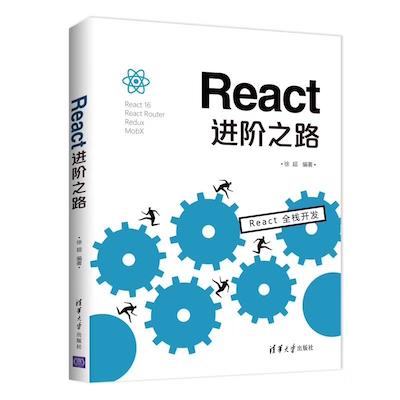React 深入系列,深入讲解了React中的重点概念、特性和模式等,旨在帮助大家加深对React的理解,以及在项目中更加灵活地使用React。
Web应用中,事件处理是重要的一环,事件处理将用户的操作行为转换为相应的逻辑执行或界面更新。在React中,处理事件响应的方式有多种,本文将详细介绍每一种处理方式的用法、使用场景和优缺点。
使用匿名函数
先上代码:
//代码1
class MyComponent extends React.Component {
render() {
return (
<button onClick={()=>{console.log('button clicked');}}>
Click
</button>
);
}
}点击Button的事件响应函数是一个匿名函数,这应该是最常见的处理事件响应的方式了。这种方式的好处是,简单直接。哪里需要处理事件响应,就在哪里定义一个匿名函数处理。代码1中的匿名函数使用的是箭头函数,我们也可以不使用箭头函数:
//代码2
class MyComponent extends React.Component {
render() {
return (
<button onClick={function(){console.log('button clicked');}}>
Click
</button>
);
}
}虽然代码2的运行效果和代码1相同,但实际项目中很少见到代码2的这种写法。这是因为箭头函数解决了this绑定的问题,可以将函数体内的this绑定到当前对象,而不是运行时调用函数的对象。如果响应函数中需要使用this.state,那么代码2就无法正常运行了。所以项目中一般直接使用箭头函数定义的匿名函数作为事件响应。
使用匿名函数的缺点是:当事件响应逻辑比较复杂时,匿名函数的代码量会很大,会导致render函数变得臃肿,不容易直观地看出组件最终渲染出的元素结构。另外,每次render方法调用时,都会重新创建一个匿名函数对象,带来额外的性能开销,当组件的层级越低时,这种开销就越大,因为任何一个上层组件的变化都可能会触发这个组件的render方法。当然,在大多数情况下,这点性能损失是可以不必在意的。
使用组件方法
代码如下:
//代码3
class MyComponent extends React.Component {
constructor(props) {
super(props);
this.state = {number: 0};
this.handleClick = this.handleClick.bind(this); // 手动绑定this
}
handleClick() {
this.setState({
number: ++this.state.number
});
}
render() {
return (
<div>
<div>{this.state.number}</div>
<button onClick={this.handleClick}>
Click
</button>
</div>
);
}
}点击Button的事件响应函数是组件的方法:handleClick。这种方式的好处是:每次render方法的调用,不会重新创建一个新的事件响应函数,没有额外的性能损失。但是,使用这种方式要在构造函数中为作为事件响应的方法(handleClick),手动绑定this: this.handleClick = this.handleClick.bind(this),这是因为ES6 语法的缘故,ES6 Class 的方法默认不会把this绑定到当前的实例对象上,需要我们手动绑定。每次都手动绑定this是不是有点繁琐?好吧,让我们来看下一种方式。
使用属性初始化语法
使用ES7的属性初始化语法( property initializers ),代码可以这样写:
//代码4
class MyComponent extends React.Component {
constructor(props) {
super(props);
this.state = {number: 0};
}
handleClick = () => {
this.setState({
number: ++this.state.number
});
}
render() {
return (
<div>
<div>{this.state.number}</div>
<button onClick={this.handleClick}>
Click
</button>
</div>
);
}
}这样一来,再也不用手动绑定this了。但是你需要知道,这个特性还处于试验阶段,默认是不支持的。如果你是使用官方脚手架Create React App 创建的应用,那么这个特性是默认支持的。你也可以自行在项目中引入babel的transform-class-properties插件获取这个特性支持。
事件响应函数的传参问题
事件响应函数默认是会被传入一个事件对象Event作为参数的。如果想传入其他参数给响应函数应该怎么办呢?
使用第一种方式的话很简单,直接使用新参数:
//代码5
class MyComponent extends React.Component {
constructor(props) {
super(props);
this.state = {
list: [1,2,3,4],
current: 1
};
}
handleClick(item,event) {
this.setState({
current: item
});
}
render() {
return (
<ul>
{this.state.list.map(
(item)=>(
<li className={this.state.current === item ? 'current':''}
onClick={(event) => this.handleClick(item, event)}>{item}
</li>
)
)}
</ul>
);
}
}onClick的响应函数中,方法体内可以直接使用新的参数item。
使用第二种方式的话,可以把绑定this的操作延迟到render中,在绑定this的同时,绑定额外的参数:
//代码6
class MyComponent extends React.Component {
constructor(props) {
super(props);
this.state = {
list: [1,2,3,4],
current: 1
};
}
handleClick(item) {
this.setState({
current: item
});
}
render() {
return (
<ul>
{this.state.list.map(
(item)=>(
<li className={this.state.current === item ? 'current':''}
onClick={this.handleClick.bind(this, item)}>{item}
</li>
)
)}
</ul>
);
}
}使用第三种方式,解决方案和第二种基本一致:
//代码7
class MyComponent extends React.Component {
constructor(props) {
super(props);
this.state = {
list: [1,2,3,4],
current: 1
};
}
handleClick = (item) => {
this.setState({
current: item
});
}
render() {
return (
<ul>
{this.state.list.map(
(item)=>(
<li className={this.state.current === item ? 'current':''}
onClick={this.handleClick.bind(undefined, item)}>{item}
</li>
)
)}
</ul>
);
}
}不过这种方式就有点鸡肋了,因为虽然你不需要通过bind函数绑定this,但仍然要使用bind函数来绑定其他参数。
关于事件响应函数,还有一个地方需要注意。不管你在响应函数中有没有显式的声明事件参数Event,React都会把事件Event作为参数传递给响应函数,且参数Event的位置总是在其他自定义参数的后面。例如,在代码6和代码7中,handleClick的参数中虽然没有声明Event参数,但你依然可以通过arguments[1]获取到事件Event对象。
总结一下,三种事件处理的方式,第一种有额外的性能损失;第二种需要手动绑定this,代码量增多;第三种用到了ES7的特性,目前并非默认支持,需要Babel插件的支持,但是写法最为简洁,也不需要手动绑定this。一般推荐使用第二种和第三种方式。
下篇预告:
React 深入系列6:高阶组件
我的新书《React进阶之路》已上市,请大家多多支持!
链接:京东 当当

**粗体** _斜体_ [链接](http://example.com) `代码` - 列表 > 引用。你还可以使用@来通知其他用户。